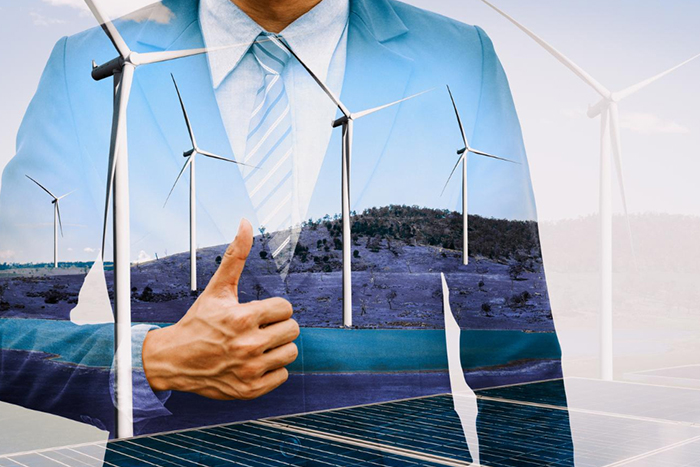Introduction: Humanity’s Race Against Time
As wildfires rage, glaciers melt, and hurricanes grow fiercer, the evidence of climate change has become inescapable. The world stands at a crossroads: continue on a path of carbon-intensive growth or pivot urgently toward sustainable, renewable energy systems. Among all available options, solar and wind energy have emerged as the twin pillars of hope for a low-carbon future. Their promise is clear — abundant, clean, and increasingly affordable power.
However, while global ambition has never been higher, the challenges of transforming energy systems that have relied on fossil fuels for over two centuries are monumental. Technological innovation, political will, financial muscle, and social acceptance must converge to realize this transformation.
Global Energy Transition Goals: Setting the Bar High
The momentum behind renewable energy targets has accelerated dramatically over the past decade.
Following the Paris Agreement of 2015, nearly 200 nations committed to limit global temperature rise to well below 2-degree C above pre-industrial levels. Scientists, however, stress that warming beyond 1.5-degree C could trigger irreversible climate feedback loops, making the need for swift decarbonization even more urgent.
While European Union has mandated net-zero emissions by 2050, it has set an interim goal to source 42.5 per cent of its energy from renewables by 2030. The United States has set a target of carbon-free electricity system by 2035 and net-zero economy-wide emissions by 2050. The world’s second largest economy, China, is looking at peak carbon emissions before 2030 and achieve carbon neutrality by 2060. It plans to install 1,200 GW of solar and wind capacity by 2030. India is looking to achieve 500 GW of non-fossil fuel capacity by 2030, and net-zero emissions by 2070. As per the International Energy Agency (IEA), to stay within a net-zero pathway by 2050, annual global renewable capacity additions must triple by 2030 compared to 2020 levels — a staggering task requiring unprecedented coordination and investment.
A Renewable Surge: The Successes of Solar and Wind
The world has made remarkable strides in scaling up renewable energy.
- Solar Power: Global solar photovoltaic (PV) capacity reached 1,419 GW by the end of 2023. Incredibly, China installed 216 GW of solar in a single year — more than the total solar capacity of the entire United States. The United States and India followed, adding over 30 GW and 13 GW respectively.
- Wind Power: Currently, the cumulative global wind capacity hit 973 GW. Offshore wind, especially in Europe, is expanding rapidly. The United Kingdom alone hosts nearly 14 GW of offshore wind farms and plans to reach 50 GW by 2030.
All these developments have been accompanied by reduction in technology costs. While solar PV module prices have dropped by 85 per cent since 2010, onshore wind energy costs have fallen by 70 per cent during the same period. Today, solar and wind are often the cheapest sources of new electricity generation in two-thirds of the world, according to BloombergNEF.
Environmental Benefits: A Clearer, Healthier Future
Transitioning to solar and wind energy is not just a technological shift — it’s an environmental imperative. While carbon emissions from coal is 820 grams of CO₂ per kWh, natural gas emits around 450 grams CO₂/kWh, solar or wind emit just 4–5 grams CO₂/kWh over their lifecycle. It is estimated that moving toward renewables could prevent 70 billion tonnes of cumulative CO₂ emissions by 2050.
Fossil fuel combustion causes over 8.7 million premature deaths annually, according to a 2021 Harvard study. A global renewable shift could avoid 130 million deaths linked to air pollution by mid-century (IEA estimate).
Water Usage
Solar and wind power require minimal water compared to fossil fuels or nuclear plants, easing pressure on global freshwater supplies — a critical advantage as water scarcity intensifies under climate change.
The Challenges: Why the Transition is Harder Than It Looks
Despite the dazzling statistics, serious hurdles threaten to derail progress.
1. Intermittency and Reliability
Solar and wind energy are inherently variable:
- Solar panels produce no power at night and less on cloudy days.
- Wind turbines depend on weather patterns that can be unpredictable.
Without large-scale storage or backup systems, grids risk blackouts and volatility.
2. Storage and Backup Systems
Batteries are essential for storing excess renewable energy — but:
- Lithium-ion battery costs remain relatively high (USD 132/kWh in 2023).
- Long-duration storage technologies (e.g., flow batteries, compressed air) are still commercially nascent.
Modernizing energy infrastructure will require USD 14 trillion by 2040 (International Renewable Energy Agency – IRENA).
3. Land and Space Requirements
Renewable projects are land hungry. While solar farms need 6–8 acres per megawatt, wind farms need wide spacing between turbines. In densely populated countries, land acquisition sparks resistance from local communities.
4. Critical Mineral Dependency
Solar panels and wind turbines rely heavily on critical minerals like lithium, cobalt, nickel, and rare earth elements. Currently, China refines 60 per cent of global lithium and 70 per cent of cobalt. On the other hand, Democratic Republic of Congo supplies over 70 per cent of the world’s cobalt. This shows concentration of supplies in fewer regions. Another challenge is the risk posed by mining expansion causing environmental degradation, labour abuses, and geopolitical tensions.
5. Policy and Financial Barriers
Unstable policy environments discourage investments. For instance, challenges such as retroactive cancellation of renewable contracts and high capital costs for developing nations are amongst the challenges. Global climate finance flows need to quadruple to over USD 4 trillion annually by 2030 to meet net-zero goals, according to the Climate Policy Initiative.
6. Public Resistance
Communities often oppose large-scale renewable projects:
- Offshore wind farms in the U.S. Atlantic Coast faced protests from coastal towns over visual impacts and fishing disruptions.
- Land-based wind projects in Europe have sparked strong resistance over noise and bird mortality concerns.
India’s Energy Transition: High Stakes, Big Ambitions
As the world’s third-largest energy consumer, India’s role is pivotal.
Achievements So Far
- Total Renewable Energy Installed (early 2024):
- Solar: 80 GW
- Wind: 45 GW
- Small hydro, bioenergy, etc.: 55 GW
- Key Projects:
- Bhadla Solar Park (2.25 GW) — the largest solar park globally.
- Pavagada Solar Park (2 GW) in Karnataka.
- Gujarat and Tamil Nadu lead in wind power deployment.
Strategic Initiatives
- Production Linked Incentive (PLI) Scheme: Supports domestic solar manufacturing to reduce dependency on China.
- Green Hydrogen Mission: Targets 5 million tonnes of annual green hydrogen production capacity by 2030.
- Renewable Energy Parks:
Massive renewable energy parks announced in Rajasthan, Gujarat, and Ladakh.
Challenges on the Ground
- Grid Infrastructure: Insufficient transmission lines to carry renewable energy from resource-rich regions (e.g., Rajasthan) to major demand centers.
- Land Acquisition: Legal hurdles and community resistance slow down project timelines.
- Storage Deficit: Large-scale battery storage projects are still in early stages.
- Regulatory Risks: Some Indian states have sought to renegotiate signed Power Purchase Agreements (PPAs), undermining investor trust.
India’s transition will need sustained financing (estimates suggest USD 160 billion annually until 2030) and innovative policy measures like carbon pricing, green bonds, and international collaboration.
Innovations Leading the Way
Despite the roadblocks, technological innovations are accelerating solutions:
- Floating Solar Farms: Over 3 GW globally installed — useful in land-scarce countries.
- Offshore Wind: Deepwater floating turbines open up vast new territories.
- Energy Storage Breakthroughs: Companies are piloting cheaper sodium-ion batteries and scalable compressed-air storage.
- Artificial Intelligence (AI): AI is helping forecast wind and solar output more accurately, optimizing grid stability.
The Future Outlook: A Decisive Decade
The 2020s will determine whether humanity stays within the 1.5-degree C warming limit.
- Global renewable energy investments topped USD 495 billion in 2022 (BloombergNEF) — but must double by 2030.
- Energy access: Renewables can help electrify the 770 million people worldwide still lacking reliable power.
- New jobs: The renewable sector could create 14 million net new jobs by 2030 (IRENA estimate).
However, achieving these milestones will require a massive reallocation of capital, reform of regulatory frameworks, and a just transition that includes workers and communities impacted by the decline of fossil fuel industries.
Conclusion: A Race We Cannot Afford to Lose
Solar and wind energy represent not just an energy transition, but a civilizational shift. They promise cleaner air, healthier populations, economic opportunity, and a liveable climate.
But this transition must be fast, fair, and inclusive. Overcoming intermittency, grid constraints, critical mineral risks, and financial barriers demands bold leadership and global solidarity. The energy transition is no longer optional. It is a moral and existential imperative.




